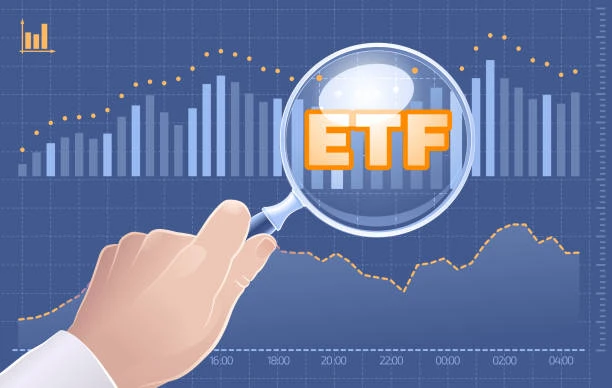
From daily transactions of only around 7%, foreign investors buying from October till the middle of December accounted for nearly 14%. Investments in Exchange Traded Fund (ETF) also increased diversification and helped stir the stock market.
Asian capital flow
Two European ETFs that are very familiar to a majority of investors are The Market Vector Vietnam ETF fund of Van Eck Global Fund Management Company (V.N.M) and FTSE Russell funds of FTSE Vietnam and FTSE Vietnam All-Share. Foreign ETFs have invested in the Vietnamese stock market a lot in the past but mainly allocate only a small portion of capital. However, these two funds are more known to investors because of allocation of a large portion of capital. Besides these funds, there are also quite a few lesser noticed funds such as KIM KINDEX Vietnam VN30, Premia MSCI Vietnam, and iShare MSCI Frontier.
However, capital flow from some Asian countries, mainly from Thailand and Taiwan, has been through funds making waves in trading in recent months. Since 2018, Thai investors have poured money by buying custody certificates which are Depositary Receipts (DR), such as DR FUEVFVND issued by Bualuang Securities to invest in the internal ETF fund DCVFM VNDiamond ETF. As of 7 December, the Stock Exchange of Thailand has announced that the amount of these depository certificates reached nearly 169.83 million, with market capitalization of more than VND 3,800 bln. The amount of DR E1VFVN30 certificates to invest in the DCVFM VN30 ETF fund also reached 238.83 million, with market capitalization of nearly VND 4,200 bln.
Data also shows that the increase in volume of custody certificates has been sudden since the beginning of October. At the end of September, the new amount of DR FUEVFVND was 78.86 million, but by 7 December it was 169.83 million, equivalent to an increase by nearly 2.2 times in just over two months. This certificate was just released at the end of March 2022 with an initial volume of 23.26 million units. Similarly, DR E1VFVN30 faced a recession in the first four months of 2022, and the volume dropped to about 163.1 million units by mid-April and by the end of September 2022 it recovered to 180.48 million units and is now 238.83 million units, an increase by 1.3 times in more than two months.
Despite receiving large capital inflow from Thai investors, domestic ETFs traded on the Vietnam stock market but were not recorded in foreign data. According to Fiin, the VNDiamond fund from the beginning of October to 6 December net withdrew about VND 3,302.7 bln, and VN30 fund net withdrew VND 1,398.5 bln.
The recent Taiwanese capital inflow was highlighted by vibrant activity by Fubon ETF. Launched at the end of March 2021 and listed on 19 April 2021, this fund attracted attention when it continuously increased in size. At the end of November, the fund was approved to raise additional capital for the fourth time with a scale of up to TWD 5 bln, equivalent to nearly VND 4,000 bln. Fiin statistics show that from the beginning of October 2022 until now this fund has drawn net capital not less than VNDiamond and VN30 when it added upto VND 4,810.5 bln.
In eleven months of 2022, the accumulated capital in the Vietnam stock market through ETFs is around VND 18,600 bln. Only from the beginning of October to 6 December, the net capital inflow was about VND 13,357 bln. In this, more than 71% or about VND 9,512 bln was entered through Fubon, VNDiamond, and VN30 funds, with a strong support of Thai and Taiwanese capital flow. Simultaneously, about 25% or VND 3,315 bln was net capital through European funds such as V.N.M, FTSE, and iShare MSCI Frontier.
Opportunities in plunge market
It is no coincidence that the Vietnamese stock market has suddenly attracted so much money. The month of October was the period when the Vietnamese market dropped under pressure of cross-mortgage related to stock mortgage activities, as well as liquidity pressures in the corporate bonds market, causing almost all listed stocks to be affected. Many stocks of businesses with normal business activities also fell in value, many of which belong to a portfolio of funds. On the other hand, business results of enterprises are beginning to grow, and the economy is quite stable showing a rather high growth rate. This is the reason investors are again pouring in money in funds.
The Vietnam stock market has many similarities with the Thailand stock market or the Taiwan stock market. Investors in these two markets go through the same marginal development, having similarities in culture and people. On the other hand, after a long period of holding price relative to other currencies in the region, the Vietnam dong depreciated more since October making currency conversion more attractive.
The flow of ETF capital from the beginning of October until now has been an important driving force for the stock market to create bottom. According to statistics on HoSE, the size of foreign investors net buying from the beginning of October to 6 December was VND 20,784 bln, of which net buying of stocks was nearly VND 18,707 bln. In November, the net buying was nearly VND 16,000 bln, and the total disbursement of foreign investors accounted for 17.5% of the total transaction value of HoSE.




















